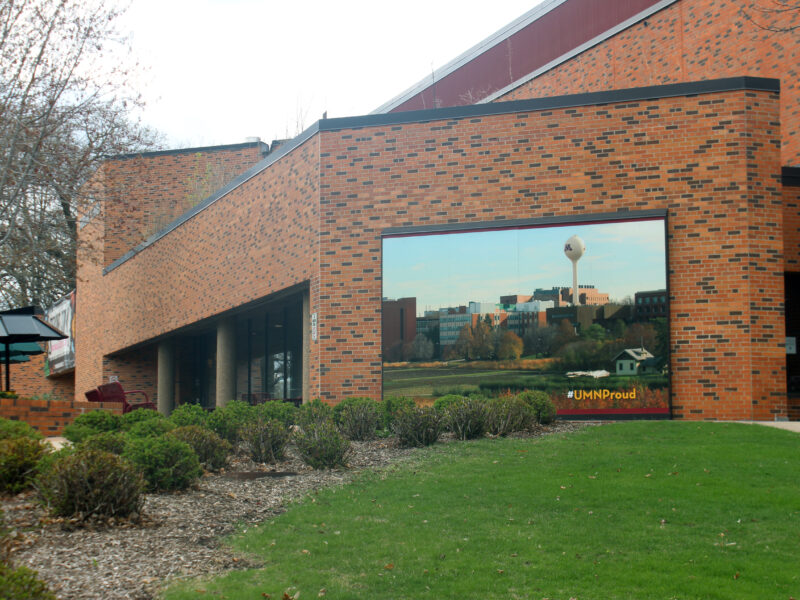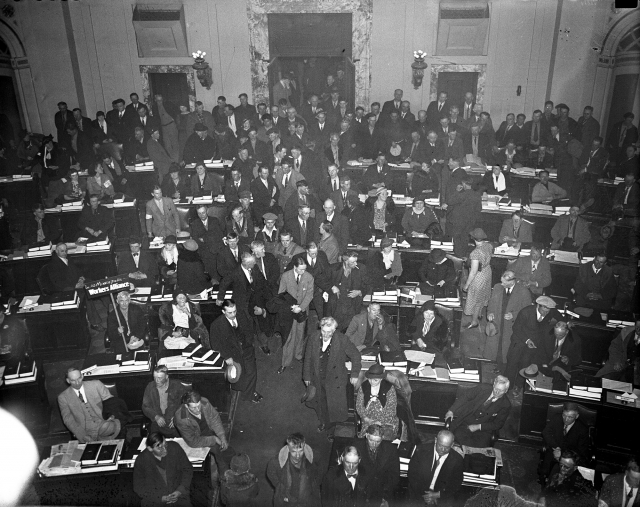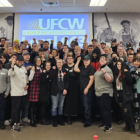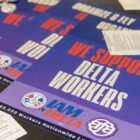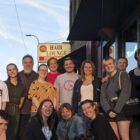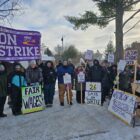The union says the labor relations system is in shambles, and low-wage employees are subject to severe mistreatment.
Minnesota
University of Minnesota Unions Say University is Capitulating to Trump Admin, Rally Against Detention of International Student
|
On March 31, workers, students, and allies rallied together on the steps of Johnston Hall, which contains the office of the University of Minnesota President Rebecca Cunningham’s, to protest what they criticize as the University’s failure to forcefully object to ICE’s recent abduction of a graduate student, and an onslaught of University policies limiting the freedom of speech across campus. By assembling in the hundreds, the crowd challenged the University’s policy that any gathering of more than 100 people must have a permit obtained two weeks in advance. The rally was organized by AFSCME 3800, representing about 6,500 clerical workers across campus, and the Graduate Labor Union (GLU), representing about 4,000 graduate workers at the University of Minnesota-Twin Cities campus. GLU, local 1105 of United Electrical, Radio and Machine Workers of America (UE), won its first union contract earlier this year.
Abaki Beck, a Ph.D. candidate in public health and president of GLU-UE Local 1105, kicked off the rally by denouncing Cunningham’s administration, stating that the University’s leadership “capitulated to the Trump administration to protect funding.”
In a January 30 article published in the The Minnesota Daily, Jake Ricker, a University spokesperson, is quoted as stating that, “While the University does not have responsibility or an active role in federal officials enforcing federal law or court processes, as a public university and employer, we cannot ignore federal court orders or subpoenas.” Some students and workers have criticized this and similar statements as an indication that the university doesn’t plan to aggressively fight the Trump administration rounding up of students. Beck went on to characterize Cunningham’s campus-wide email on March 28, one day after the abduction of a graduate student by ICE, as “insufficient” and delayed, “after violence already occurred.” In that email, Cunningham stated, “The University had no prior knowledge of this incident and did not share any information with federal authorities before it occurred.” She called the news “distressing” and offered mental health support to those disturbed by it, but critics say she did not condemn the detention itself or publicly outline steps to avoid this kind of action in the future.
Government
Postal Workers Rally Against Trump’s Proposed Privatization of the Postal Service
|
U.S. Postal Service workers with local branches of the National Association of Letter Carriers rallied at the Minnesota State Capitol on March 23, along with hundreds of community allies, Minnesota unions, and politicians to demand a strong contract—and oppose the Trump administration’s recent threats to privatize the postal service and reduce services. “Public sectors are the frontline, they will go after private sectors next,” said Tyler Vasseur, a postal worker with the National Association of Letter Carriers (NALC), Branch 9. Vasseur led the crowd with rallying cries for better pay, and denunciations of privatization and possible layoffs. For the upcoming contract, Vasseur stated that postal workers are fighting for a $30-per-hour starting wage and the right to strike. The rally was part of a nationwide day of action to oppose the dismantling of the postal service, organized by NALC.
Minnesota
What Medicaid Cuts Would Mean for Disabled People and Homecare Workers
|
Kyle Murphy is a 32-year-old disabled man living in Aurora, Ill., where he rents a room with his father. He enjoys having friends over, following Chicago sports, and watching movies. However, as the Trump administration pushes for extreme cuts to government spending, including Medicaid, which funds numerous home healthcare programs across the country, Murphy worries that his access to home healthcare, and his quality of life, are on the line. Murphy has Duchenne muscular dystrophy, a neuromuscular disease that progressively weakens his muscles over time. He uses a wheelchair full-time and relies on the care of home healthcare workers, or personal assistants, to support him with daily living—including getting in and out of bed, bathing and dressing, eating, administering medications, and more.
Minnesota
“One Job Should Be Enough”: How 9,000 Grocery Workers Are Banding Together in Minnesota
|
Monica Duque never knows how many hours she is going to get in a given week. She works at the Jerry’s Cub Foods on East Lake Street at the front of the store, helping customers, overseeing cashiering, and running online shopping. She finds out her hours, she explains, “when the schedule is posted on Friday, for the week after next.”
“There is no consistency,” says the 24 year old, which makes it hard to save money, or plan much for the future. She makes a little over $20 an hour, and even being cut 10 hours in a week can have a big impact on her finances. “I can do morning one day then night shift the next day.
Minnesota
“We Are In This For the Long Fight”: How Workers and Unions are Reclaiming the Labor Movement
|
Rank-and-file union members are preparing to confront the policies targeting their workplaces and communities.
Minnesota
Starbucks Unions’ Christmas Eve Strikes Inspire Two More Minnesota Stores to Unionize
|
Here’s why workers are kicking off two new Starbucks union drives.
Minnesota
Why Delta Air Lines Workers Are Fighting for a Union
|
Workers are ramping up organizing efforts at the most profitable airline company on the planet.
Immigration
How St. Paul Teachers Are Defending Immigrant Families
|
Teachers in the state’s capital city are taking action against recent threats toward the immigrant community.
Art
Guthrie Theater’s Front-of-House Workers Fight for a First Contract
|
Eva Nereson, 23, has worked as a housekeeper at the iconic Guthrie Theater in downtown Minneapolis for the past three years, in both part- and full-time capacities. She describes her duties as cleaning “everything that people are likely to see when they come in and see a show at the Guthrie,” including the lobby, carpets, bathrooms, and inside the theater.
In June, the front-of-house workers of the Guthrie, which includes guest services workers, box office staff, lounge hosts, janitors, and ushers, won their union with 70% of workers voting in favor. Represented by International Alliance of Theatrical Stage Employees (IATSE) Local 13, the workers are preparing to bargain their first contract.
They are fighting for wage increases, reinstatement of some positions that were cut, more transparency of pay tiers, scheduling hours two weeks in advance, additional safety training, and support with parking. Some positions, like ushers, work short shifts, and the cost of their wages for the day are eaten up almost entirely by the cost of parking in downtown Minneapolis, workers say.
In interviews with Workday Magazine, they reflect on the importance of their role in the Twin Cities’ arts community—as many are frontline workers at multiple local venues, an increasingly unionized sector, and contribute as working artists themselves.
Nereson describes the moment of calm after crowds of theater-goers rush in for a show: “It’s very zen for me.” In addition to working at the Guthrie, Nereson also works at the Minneapolis Park Board as an event attendant, and goes to school at Minneapolis Community and Technical College, where she also works with the school’s theater department.
Nereson began working at the Guthrie in 2022, shortly after the theater reopened following the pandemic lockdowns. She has worked in other janitorial positions, and says when she first started it felt like “the best job I’d ever had.” The theater offered bonuses to workers, various benefits and perks, and had an overall very positive work culture, she recalls.
However, as the months went by, Nereson says a lot of these perks faded away, with workers facing cuts to holiday pay and a decline in overtime approvals, alongside a reduction in full-time positions, which intensified the workload for the remaining workers.
Minnesota
Minnesota Healthcare Workers in Deer River Continue Historic Strike
|
Around 70 workers with SEIU Healthcare Minnesota & Iowa are staying strong on the picket lines against nonprofit Essentia Health.


